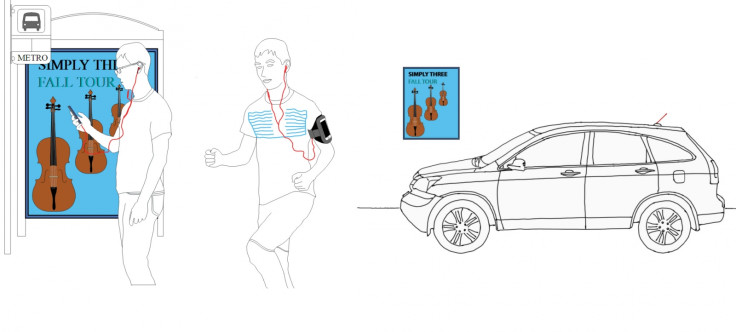Singing posters: Low power signals can turn random objects into FM radio stations
Radio signals can be used to broadcast messages from random objects to smartphones several metres away.
Wireless researchers from the University of Washington have developed a new technology that has the ability to turn any random object into an FM radio station, such as a poster or billboard that sings to consumers when they walk past.
The technology, known as backscattering, is a wireless modulation technique that can take ambient analogue low power FM radio signals and embed audio and digital data into them. The idea is that when a consumer walks past one of these objects, such as a poster, the device embedded in the object can communicate with the FM receiver on the user's smartphone.
The user would need to actively tune into the right radio station in order to receive the frequency, so ideally the poster would provide instructions and an incentive for the user to do so, such as tuning in to listen to a band's new single and then stand a chance to win a prize.
The researchers say that their prototypes are able to transmit 3.2kbps worth of data in FM signals across a distance of between 5-60ft, meaning that cars driving past would be able to pick up the poster's specific radio channel too.
"Posters and billboards have long been a staple of advertising in public spaces. However these traditional methods of advertising rely entirely on a single graphic to attract attention and convey information. A poster capable of broadcasting to a smartphone could send audio, notifications and links for discounted event tickets," the researchers write in their paper.
"This added level of interactivity allows the advertisement to persist beyond a quick glance and allows the advertiser to take advantage of smartphone functionalities, for example to give directions to an event."

The backscattering technique was invented as part of the University of Washington's continuing work to develop technologies for smart cities and the Internet of Things in its dedicated Networks and Mobile Systems Lab, as well as its Sensor Systems Lab.
And the researchers haven't stopped at posters – the new technology could also be used to create "smart fabrics". The researchers used conductive thread on a sewing machine to create patterns on a cotton T-shirt, and the T-shirt was able to successfully transmit data to a smartphone.
The research, entitled "FM Backscatter: Enabling Connected Cities and Smart Fabrics" is an open access paper published on the University of Washington's Smart Cities website.
University of Washington intends to follow up this research by developing multiple backscatter devices that can operate at the same time on different FM radio bands without interference. They are also interested to see whether it is possible to power these embedded devices using either ambient radio signals or solar energy.
"This paper opens a new direction for backscatter research by showing for the first time that ambient FM radio signals can be used as signal sources for backscatter communication," the researchers conclude.
"Such a capability can enable transformative visions such as connected cities and smart fabrics that promise to change the way we interact with objects around us."
© Copyright IBTimes 2024. All rights reserved.






